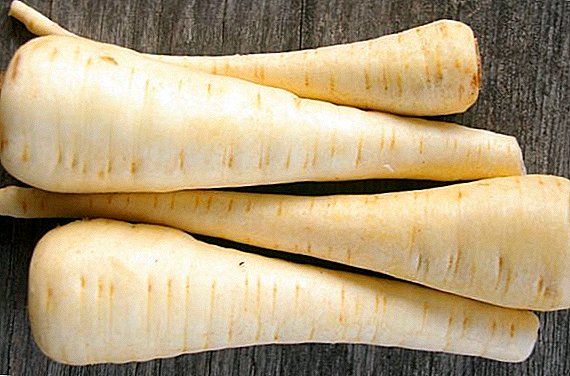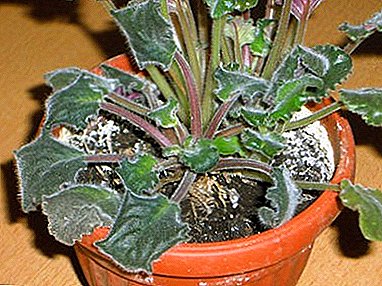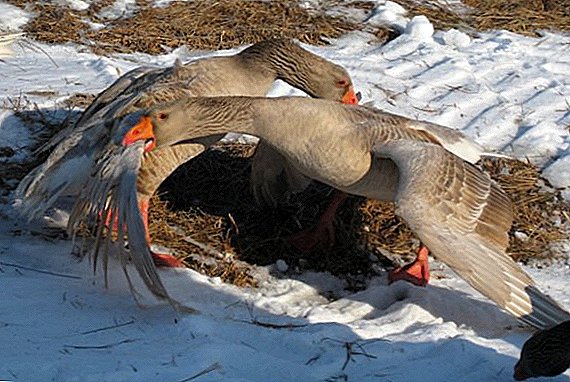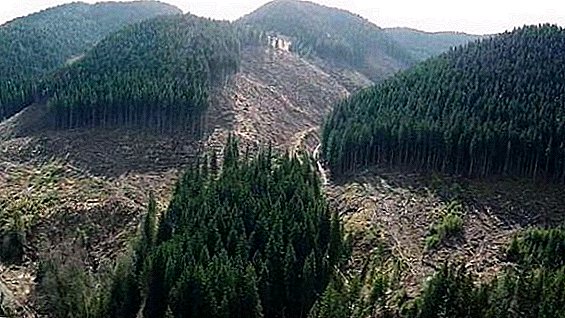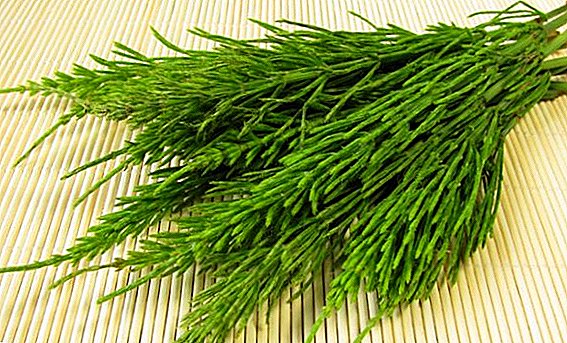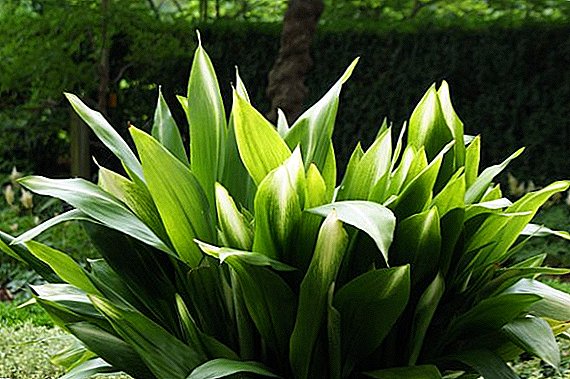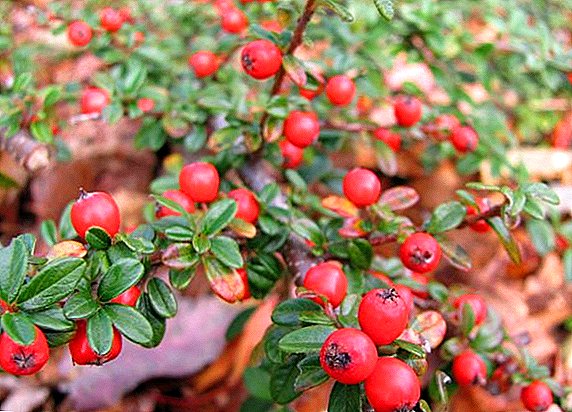 Cotoneaster can be not only a fruit, but also a decorative culture. Red fruits against the background of lush green foliage will advantageously tint the plot if you plant a shrub as a hedge or a central figure in combination with other plants.
Cotoneaster can be not only a fruit, but also a decorative culture. Red fruits against the background of lush green foliage will advantageously tint the plot if you plant a shrub as a hedge or a central figure in combination with other plants.
Did you know? The name of the plant comes from the combination of two Greek words "cotonea" - quince, "aster" - having the appearance, the leaves of one type of cotoneaster look like quince leaves.
Reproduction cotoneaster cuttings
Culture is propagated in several ways, depending on the type of shrub. But before you plant a bush in your area, pick him a suitable place and prepare the soil. It is advisable to pick a spot that is lit, but light penumbra will also not interfere. The soil for the cotoneaster should be nutritious, not acidic and well drained.
 Green cuttings cut from the central part of the annual stem. The optimal time for this is the end of June - the beginning of July. One third of the leaves on the stem is cut, the cutting is kept for a period of six hours in a solution of heteroauxin, which stimulates root formation. Then in the prepared soil (peat and sand) is placed at an acute angle. Reproduction cotoneaster green cuttings is easy, as well as caring for seedlings. After planting, the cutting is poured abundantly with settled water and covered with a large plastic bottle with a cut-off bottom. Watering is done in this hole, and shelter is taken on very hot days. It is possible to replant to a permanent place next spring, when the root system is strengthened and developed in the cutting.
Green cuttings cut from the central part of the annual stem. The optimal time for this is the end of June - the beginning of July. One third of the leaves on the stem is cut, the cutting is kept for a period of six hours in a solution of heteroauxin, which stimulates root formation. Then in the prepared soil (peat and sand) is placed at an acute angle. Reproduction cotoneaster green cuttings is easy, as well as caring for seedlings. After planting, the cutting is poured abundantly with settled water and covered with a large plastic bottle with a cut-off bottom. Watering is done in this hole, and shelter is taken on very hot days. It is possible to replant to a permanent place next spring, when the root system is strengthened and developed in the cutting.
Important! Before planting the rooted cutting, lay drainage at the bottom of the fossa. Moisture should not stagnate: this will lead to rotting of the roots. Too acidic soil "dilute" with lime.
For reproduction by lignified cuttings, the shoots are cut in autumn and stored until spring in the refrigerator. Spring planting of lignified cuttings does not differ from the same procedure with green cuttings. The tip of the shoot should be dipped in a root stimulator and landed in a prepared well. Rooted cuttings to fall.
Grafting is a simple but effective way of breeding a cotoneaster.
The grafting method is used for varietal species of a cotoneaster. As a stock take a well-developed young shoots of wild cotoneaster. The budding procedure is carried out in the morning when the plant is saturated with moisture, the dates are the end of August - the beginning of September. The scheme is as follows: the cut bud of the rootstock with a petiole is inserted into a T-shaped incision on the bark of the graft. In the spring before the beginning of the growing season, the upper part of the rootstock above the bud is cut off. The kidney will give life to a young sprout, which by the fall can grow to a meter and a half.
How to propagate cotoneaster by layering
 For the cotoneaster of the groundcover, reproduction by layering is ideal. In such plants, shoots that spread above the ground can also multiply independently. To streamline and speed up the process, select the shoots of the current year and use metal clips to attach to the surface. Top you can sprinkle with humus. In the spring, the rooting place is carefully dug, the branch is separated from the donor bush and transplanted to a permanent place. This method is considered one of the best: escape, rooting, receives from the donor the necessary food thanks to an adult well-developed root system. By the time of transplanting you have a strong and healthy seedling.
For the cotoneaster of the groundcover, reproduction by layering is ideal. In such plants, shoots that spread above the ground can also multiply independently. To streamline and speed up the process, select the shoots of the current year and use metal clips to attach to the surface. Top you can sprinkle with humus. In the spring, the rooting place is carefully dug, the branch is separated from the donor bush and transplanted to a permanent place. This method is considered one of the best: escape, rooting, receives from the donor the necessary food thanks to an adult well-developed root system. By the time of transplanting you have a strong and healthy seedling.
Division of adult cotoneaster bushes
Strongly grown adult cotoneaster bushes can be seated, divided into bushes. The cotoneaster bush is dividing both in spring and in autumn. The plant is carefully dug, cleaned from the sticking of the earth. The root system is examined and divided into several parts so that each bush has strong roots of roots. The resulting delenki planted in a prepared place.
Important! The root neck of the bush when planting should be at ground level.
In the first month of planting delenki watered every day. Then gradually reduce watering to two times a month. If the season is rainy, watering is carried out once a month. About eight liters of water are poured under the bush.
Sowing cotoneaster seeds
 Cotoneaster is a fruiting shrub, and its seeds may well produce offspring. The problem is that the germination of seeds is very low, and it grows slowly. A seed planted in a medium-sized sapling grows after four years. Therefore, the seed method is used for breeding new varieties. If you still decide follow these instructions:
Cotoneaster is a fruiting shrub, and its seeds may well produce offspring. The problem is that the germination of seeds is very low, and it grows slowly. A seed planted in a medium-sized sapling grows after four years. Therefore, the seed method is used for breeding new varieties. If you still decide follow these instructions:
- Berries need to be dried up so that the flesh easily recedes;
- After removing the pulp, rinse the seeds well;
- Reject unpromising seeds can be as follows: immerse in a container with water and wait until the seeds sink to the bottom. Those that pop up - throw it away.
- Selected seeds are sent to a year-long stratification in wet sand. The temperature is maintained at 30 ° C for two months, then gradually lowered to -5 ° C.
Interesting! Cotoneaster shrubs, thanks to the slow growth is ideal for curly hairstyle. If you are fond of topiary art - the cotoneaster bush will decorate your garden with any shape, animal, geometric figure or fairy-tale character.Whatever method you choose: grafting, seed or grafting of a cotoneaster, remember about preparing the soil and caring for the plant. Young saplings in their first wintering need shelter from frost. Take care of your landing.


